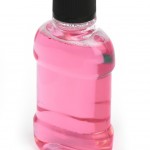
Chlorhexidine (CHX) has been used as a mouthwash for many years. The aim of this review was to assess, the effectiveness of Chlorhexidine (CHX) mouthrinse against plaque growth, gingival inflammation as well as the degree of staining.
Three databases were searched Medline, Embase and the Cochrane Central Register of Controlled Trials (Central), reference lists of identified articles were also searched. Randomised controlled trials of CHX mouthrinses in health adults over the age of 18 with gingivitis were included. Included trials had to have a minimum duration of ≥ 4 weeks. Studies in Periodontal, prosthodontics, orthodontic and implant patients were excluded. Only English language studies were included.
- 30 studies (34 experiments) were included. Potential risk of bias was low in 9 of the 30 studies, moderate for 10 studies and high for 11 studies but if allocation concealment were added to the criteria only three would be considered as low risk of bias. A descriptive summary of all 34 experiments was presented but it was also possible to perform a meta-analysis of 13 studies. Meta-analysis showed significant weighted mean differences (WMD) favouring CHX.
- -0.39 [95% CI: -0.70; -0.08] for the Plaque Index Silness & Löe,
- -0.67 [95% CI: -0.82; -0.52] for the Plaque-Index Quigley & Hein (PIQH)
- -0.32 [95% CI: -0.42; -0.23] for the Gingival Index GI
- -0.08 [95% CI: -0.10; -0.05] for the bleeding aspect of the GI,
- -0.21 [95% CI: -0.37; -0.04] for the Papillary BIeeding Index,
- -0.16 [95% CI: -0.26;-0.07] for Bleeding on Marginal Probing
- 0.91 [95% CI: 0.12; 1.70] for the Lobene Stain Index.
- MA of studies with a low risk of author-estimated bias showed a WMD of
- -0.68 [95% CI: -0.85; -0.51] for the PIQH
- -0.24 [95% CI: -0.29; -0.20] for the GI in favour of CHX.
- Relative to control, the reduction with CHX for plaque was 33% and for gingivitis 26%.
- Staining was the most common observation as described in 19 articles.
- Change of taste sensation was reported in seven articles
- Six articles reported increased calculus formation.
- Other less frequent complaints were a burning sensation, hypersensitivity, mucosal lesions and anaesthetized sensation.
The authors concluded
The extracted data presented in this systematic review provide strong evidence for the anti- plaque and anti-gingivitis effects of a CHX mouthrinse used as an adjunct to regular oral hygiene in gingivitis patients. As can be deduced from studies with a low estimated risk of bias, rinsing with CHX in addition to oral hygiene procedures results in approximately 33% less plaque and 26% less gingivitis as compared to controls.
Comment
As the authors note the American Dental Association recommends that studies of products to control gingivitis should be demonstrated over a six-month period. Ten of the studies included here were of six months duration. There is considerable heterogeneity in the outcomes measured, duration of studies and the CHX concentration used in the studies. A recent systematic review compared the effect of a 0.12% and a 0.2% CHX rinse on plaque and gingivitis and concluded that there is a small but statistically significant difference in the effect on plaque between the two CHX concentrations (Berchier 2010). While the meta-analysis does show a good reduction in plaque and gingivitis scores it should be noted that only three of the included studies could really be assessed as being at low risk of bias.
Links
Van Strydonck DA, Slot DE, Van der Velden U, Van der Weijden F. Effect of a chlorhexidine mouthrinse on plaque, gingival inflammation and staining in gingivitis patients: a systematic review. J Clin Periodontol. 2012 Mar 27. doi: 10.1111/j.1600-051X.2012.01883.x. [Epub ahead of print] PubMed PMID: 22957711.
Berchier CE, Slot DE, Van der Weijden GA. The efficacy of 0.12% chlorhexidine mouthrinse compared with 0.2% on plaque accumulation and periodontal parameters: a systematic review. J Clin Periodontol. 2010 Sep;37(9):829-39.

[…] Dental Elf – 21st Sept 2012 – Review suggests good reductions in plaque levels and gingi… […]